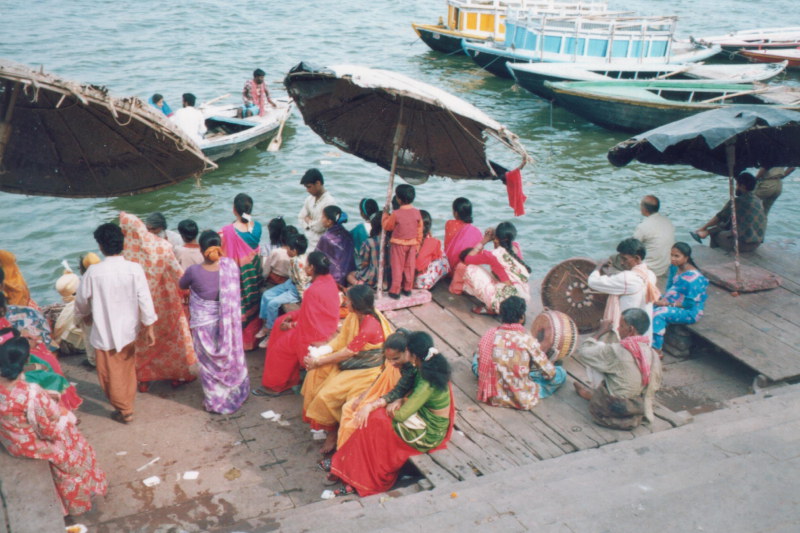When I read about where I walked this morning along the Ghats I can see the things that Dianne Eck points out in Banares, City of Light:
The Asi Ghat: the first ghat at the meeting of the Asi and Ganga rivers. It is popular and as I walked by there were lots of people bathing on its muddy banks. It is the only ghat without steps. Above this ghat is the house of Tulsi Das (the man who wrote the Ramayana).
Walking back to the Dashashvamedha ghat I walked past the Hanuman ghat (no one here) and the Harishchandra burning ghat. This ghat is for the poor people of India. Here I found a human skull which I took a picture of. The story behind this ghat is interesting, and is found in Banares, City of Light:
The Brahmin Vishvamitra asked king Harishchandra for a ritual fee called the rajasuya dakshuna. Harichandra in his generosity gave Vishvamitra his entire kingdom and all he owned. Having accepted, Vishvamitra still pressed the king for the token rajasuya dakshuna, but Harishchandra had nothing left to give.
Rather than break his promise, the king came destitute to Kashi where he sold his wife and son into slavery and sold himself into bondage to work the cremation grounds in order to pay the fee.
He did not see his loved ones again until the day his wife, worn with hardship, came to the cremation ground carrying her son’s body. He had died of a snake bite and she had not even a blanket to cover his corpse.
The testing of Harishchandra proved the strength of his character, even in the worst of times. In the end, the gods rewarded him and restored his throne and his son to him. (223-4)
Some say the poor man’s ghat is the oldest of the burning Ghats. There were only a few bodies waiting when I walked by, most likely those who cannot afford the wood and hefty sacred fire fee of the Manikarnika Ghat.
